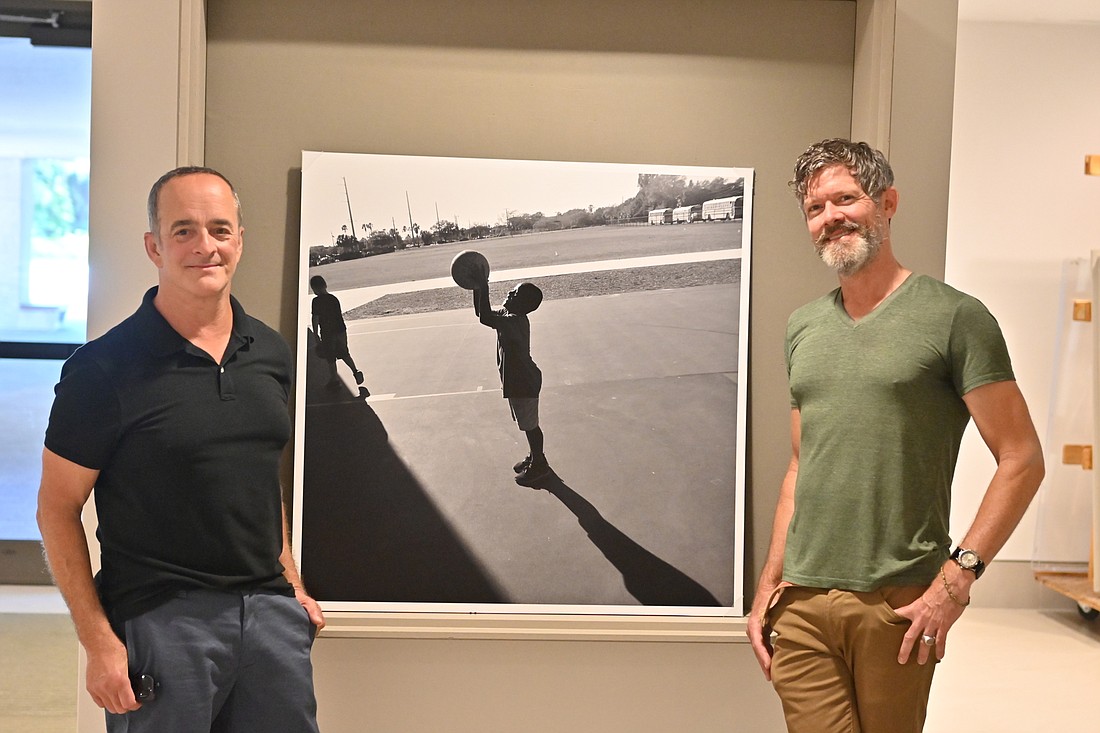- July 26, 2024
-
-
Loading

Loading

It started out as a potential hobby. And it’s grown into an exhibition.
Robert Rogers, the community relations manager of the Boys & Girls Club of Manatee County, first pitched photography to some of the youngsters he works with as a way to express themselves.
And then he took notice of what their eyes were telling them. Rogers, so proud of the work his students did, made a proposal to Ringling Museum, and it turned out to be an offer they couldn’t refuse. That’s how the work of these students, so raw and so evocative, became the subject of an exhibition at Ringling’s Community Gallery.
“This is all them. This is their vision,” says Rogers of the exhibit. “It was something they were interested in, and there was really nothing in place. So I was like, ‘Will you all give me a minute? And we’re going to make this happen.’ My background is in visual arts, so I was like, ‘You don’t have to ask me twice if you want me to develop some arts programming. I’m on it.’”
The students, ranging in age from 13 to 17, were novices to photography.
In fact, said Rogers, nine of the 10 young adults had never even touched a camera before.
Everything they had shot previously had been off their phone’s camera, so there was a bit of a learning curve.
Alan Cresto, a photographer who worked with the students, said he began by telling them elementary principles of photography. He felt like he was on the verge of losing their attention, so he junked the tutorials and advanced straight to shooting images.
And when he saw what they saw through their viewfinder, he was transported back to his own beginnings. Cresto said he began working with cameras when he was just 8 years old, and in his mind, there’s nothing like the untrained eye of an amateur.
“I remember being a young photographer and taking pictures,” he says. “I showed them to a magazine editor once, and she said: ‘You’re never going to see these images again. They’re great. This is you right now, and now you’re going to start feeling the parameters of what you need to do for the job.’ I’d liken that to this.
"This is their raw thing now, without being diluted at all, without having to do it to please anybody. The concept of a museum show, I don’t think it resonated with them. They just wanted to take the pictures. You get that soul.”
Cresto and Rogers were speaking recently as the photography exhibit was set up; the photos were still not framed, and where they would stand on the wall was still being worked out.
The exhibit won’t be officially opened until May 19, and Rogers hopes that his photographers and their parents will be there to see the unveiling. The work will stay up until August 2.
Rogers said the youngsters are excited to see their work on a museum wall and to share their visions with the community.
“I think what they were looking for — other than having fun and discovering photography — was another way of presenting themselves,” he says. “A lot of these kiddos don’t feel acknowledged or seen. They’re not always comfortable articulating. Through art, through discovering photography, they were able to present themselves in such an honest way.”
If you ask Cresto, that came about in the most organic way possible.
He told them that they don’t have to worry about composition or clarity; in some cases, he told them, it was perfectly alright to shoot a blurry shot in the hope that it will convey a natural emotion.
Cresto was there to lend technical assistance, but more frequently, he found himself just whispering easy asides.
What’s going on over there? What happens if you shoot at the sun?
At root, he said, he was hoping to build a safe space where they could experiment.
The final results are striking, and Rogers and Cresto made one executive decision.
They decided the photography would pop better in black-and-white than it does in color. So now you have the timeless art of photography mixed with the urgency and the raw expressive nature of photographers finding their voice one photo at a time.
“It really is visual poetry. It’s so truthful,” says Rogers. "In my humble opinion, it’s easier to just focus on the image when it’s in black-and-white. That was the goal: to afford the viewers the opportunity to hold space with these extraordinary young adults.”